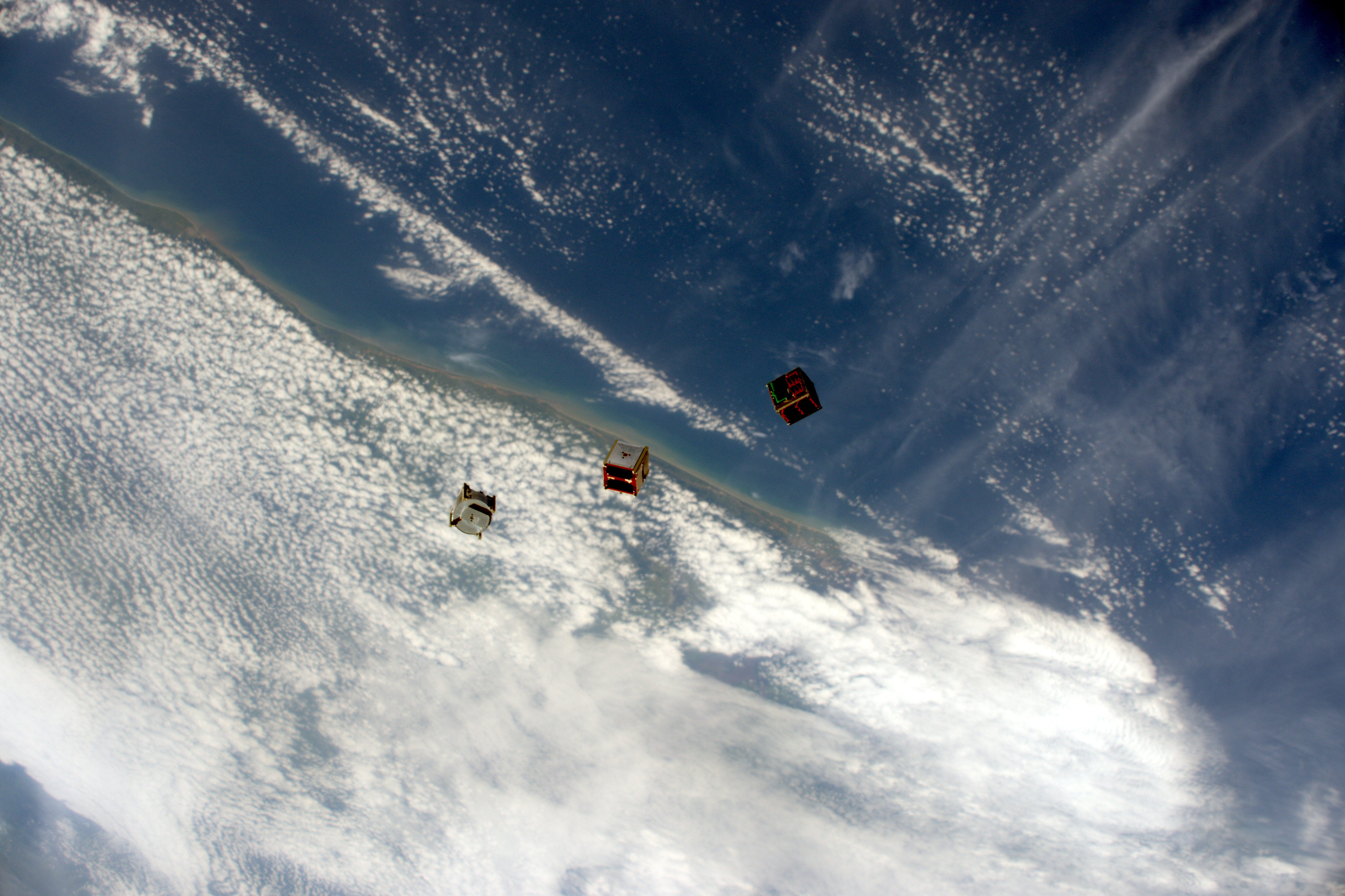Beginning of 2017, ESA issued the Space system life cycle assessment (LCA) guidelines. The guideline helps space actor to carry out LCAs and communicate in a consistent way. It is available on simple request to the European space industry and universities.
As we wrote on this blog last July we have been working on the EcoDesign handbook for a Life Cycle Assessment for space missions and activities and we are proud to announce that it is finally out. This handbook is the result of numerous studies and activities coordinated by the Eco Design team of engineers and carried out by the European space industry and environmental specialists.
Transitioning to a low-carbon and resource-efficient circular economy is nowadays a priority for many European country and a policy pillar of the EU (€3.4 billion dedicated). Nonetheless, up until now, space has been considered of low priority with the assumption that low production rates result in low impacts. While this might be accurate for green gas emissions, in other cases such as impact on ozone depletion, studies are necessary to quantify the real impact. With increasing cubesats and mega constellations on the way, and the increased launch rate this will demand, the focus on space will only increase. So we thought that was relevant and urgent to provide the European space industry with a tool that could allow them to work in a more environmental friendly direction.

Micro Satellites launched from the ISS
Credits: Thomas Pesquet / ESA
In the recently published 2017 UN Guidelines by the Committee on the Peaceful Uses of Outer Space, it states clearly that “intergovernmental organisations should take into account, the social, economic and environmental dimensions of sustainable development on Earth…and should promote the development of technologies that minimize the environmental impact of manufacturing and launching space assets and that maximize the use of renewable resources and the reusability or repurposing of space assets to enhance the long-term sustainability of those activities”.
Starting already in 2012, the Clean Space initiative has established ESA as the world leader on environmental issues for space, both on the Earth and in orbit. The main results achieved by activities already carried out are the following:
- quantifying the environmental impact of satellites and launchers
- developing alternatives to REACH-endangered substances
- studying the impact of launcher plumes on the ozone, in which it was discovered that the ozone depletion depends a lot on the size of the emitted alumina particles
The scientific and quantitative nature of this work is vital in an area where ‘green washing’ (using the green label for marketing purposes) is prevalent.
So here there come our: “Space system Life Cycle Assessment guidelines”. These guidelines represent the first attempt of translating the use of the LCA tool to the space sector that is quite a unique domain, as we highlight in the introduction of this manual: “it has low production rates, long development cycles, uses specialised materials and industrial processes and has impacts on environments so far not considered in the traditional LCA”.
For examples, one of the first thing to be done was to identify environmental impact categories such as global warming, ozone depletion potential but also marine or freshwater ecotoxicity and mineral resource depletion which are meaningful for the space sector. Then we had to break down space mission in its main phases, considering that the total environmental impact is the sum of the launch segment, the space segment and the ground segment, and in these phases we had to take into account, the spacecraft assembly, for instance but also the office work and traveling and the disposal of the spacecraft. That because we wanted to make it as broad and comprehensive as possible.
In fact, the main goal of these guidelines is to establish methodological rules that provide the framework for performing “comprehensive quantitative assessments and consistent environmental declarations for complete space system as well as individual hardware equipment, components, material and processes”. They address not only experienced LCA practitioners whereas with or without space experience but also users without any LCA experience.
This is a tool that not only would make of the European space industry a pioneer in eco-design and green space, but also that would give it a competitive advantage since the ability to show that a launcher or satellite has a lower environmental footprint may well become an extra selling point. Eco-design also mitigate disruption risks due to environmental legislation, such as REACH and can lead to cost savings due to the more efficient use of energy and resources.

Desert Art
Credits: Thomas Pesquet / ESA
The EU has begun work to develop eco-design frameworks for a given product or sector to aid transparency and comparability of results. ESA took the initiative to develop a standardized methodology environmental impact assessment specific to the space sector.
This Space System Life Cycle Assessment Guidelines provides industry with methodological rules on how to correctly perform space-specific LCAs. It encompasses the framework for performing comprehensive quantitative assessments and consistent environmental declarations for complete space systems as well as individual hardware equipment, components, material and processes.
The European space industry interested in carrying out such studies using the ESA Guidelines is invited to send a request to ESA’s Clean Space team (cleanspace@esa.int).
Through Clean Space, ESA has taken the world-wide lead on eco-design for space. In order to maintain its position as a forward-thinking, innovative and responsible organization, ESA will continue to work alongside the EU and European space industry, stimulating all of us towards a future that protects our planet.





Discussion: no comments